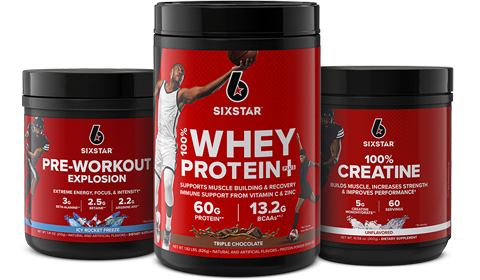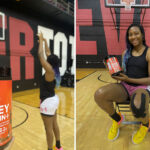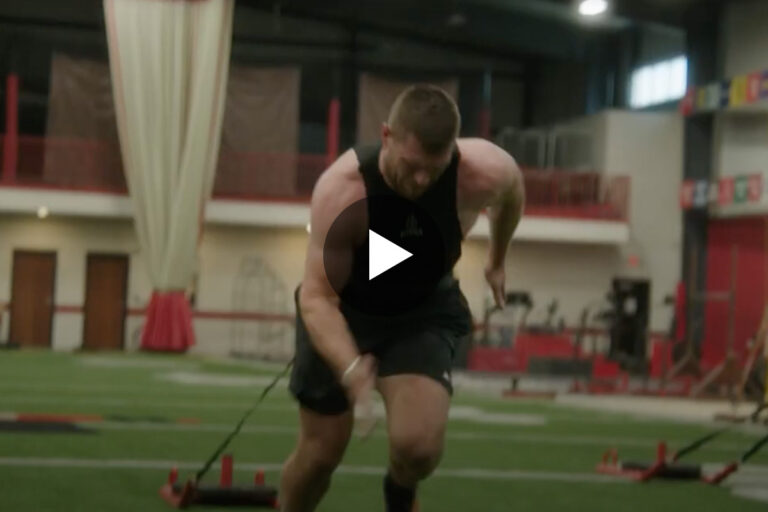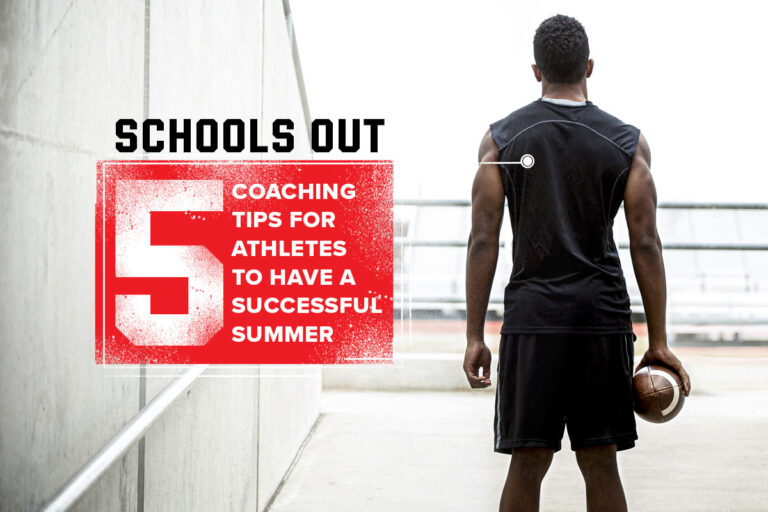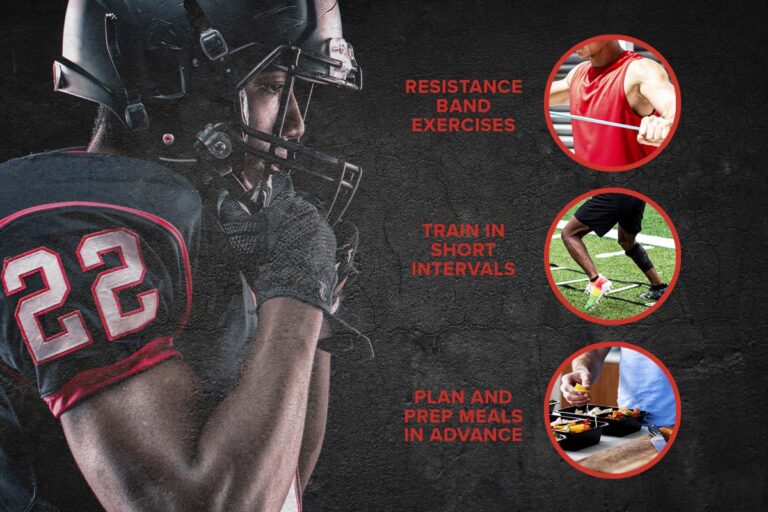While most of us enjoy beaches, barbecue and a little downtime over the summer months, football players know that pre-season is around the corner.
Hot days. Tiring drills. Cut days. It’s during these critical moments that a mere tenth of a second can be the difference between making the starting lineup and missing the squad altogether.
For pro football draftees, speed is often viewed or perceived by one’s 40 time. But, there’s a difference between being naturally fast and instinctively fast. Hall of Famer Randy Moss ran a 4.25 4-yard dash, while his teammate Wes Welker ran a 4.65 40 time at his pro day. Despite the disparity, Moss only caught 79 more balls throughout his career (982 vs. 903), as playing a stretch position is more dependent on natural speed, while slot receivers rely on a shifty range of motion to be effective.
The old adage states that “you can’t teach speed.” But we disagree. Check out these exercises and tips to help you get faster, quicker.
START WITH A GREAT PRE-WORKOUT
Coach Ed Orgeron (Coach O) says that when he needs that boost of energy, he’ll drink anywhere between 8 to 10 energy drinks per day. But, we chalk that up to Coach O being Coach O. Receiver Chris Hogan is one of many players who admit to drinking coffee before games, as did Mike Golic during his playing days.
For those of us who don’t like the taste of coffee, nor the sugar associated with a sports drink, we suggest a Six Star pre-workout. The variety of flavors makes a pre-workout a simple, quick and effective way to grab that added jolt of energy.
YOU LIKE MATH? LISTEN UP
There are two proven ways to run faster – take longer steps (cover more ground) or take faster steps (move your arms and legs faster). Ultimately, all players must understand how to maximize both to succeed. Thankfully, there are also exercises for both that don’t require any equipment. The four below were recommended by former defensive back Donovin Darius.

FAST ARMS (FASTER STEPS)
Stand tall in front of a mirror with your feet shoulder width apart. Bend your elbows at 90 degrees with your palms open, facing each other. Bring one hand up to your cheek in front of you and the other hand to your rear butt cheek.
Remember to keep your arms at 90 degrees through the whole movement. While standing tall, on command, pump your arms as fast as you can through the sprinting motion for 20 seconds at a time, then rest.

FAST FEET (FASTER STEPS)
Stand in front of a mirror with your feet shoulder width apart. Bend your elbows at 90 degrees with your palms open, facing each other. Assume the position.
On “Go” run as fast as you can in place by bringing your knees up halfway. Make sure that your knees are pointing straight ahead, your heels don’t touch the ground and your hands are still grazing your pockets. This is a speed drill that helps teach your muscles and nerves to fire fast while you’re working on perfect form running. Perform this exercise starting out five times for 20 seconds with a one-minute rest in between.

HIGH KNEES (LONGER STEPS)
Stand in front of a mirror with your feet shoulder width apart. Bend your elbows at 90 degrees with your palms open, facing each other. Assume the position with your right hand at your cheek.
On “Go,” run as fast as you can in place by bringing your knees to the same height as your hips. Make sure that your knees are pointing straight ahead, your heels don’t touch the ground and your hands are still grazing your pockets. This is a speed drill that helps your core and leg muscles develop the strength and endurance needed to maximize and maintain top speed levels over time and distance.
Perform this exercise starting out five times for 20 seconds with a one-minute rest in between. The athlete should count how many times their right foot hits the ground, which is an indicator of the stride rate and how in shape they are from one set to the next.
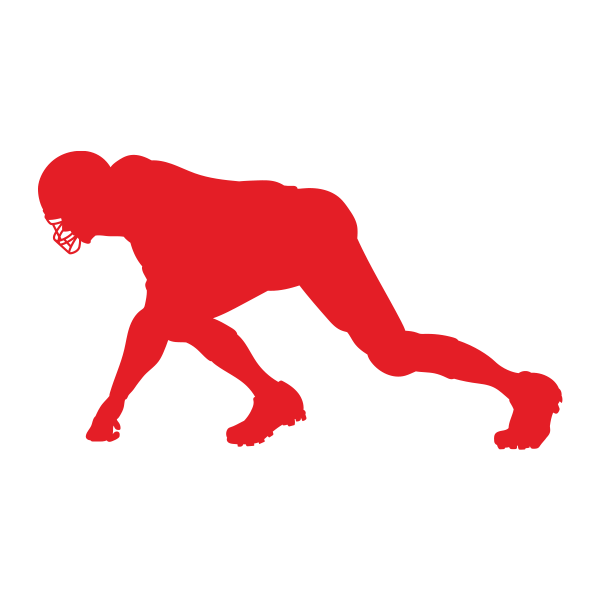
SQUATS (LONGER STEPS)
The more power an athlete can put into the ground, the more ground they can cover between strides. Squats build up those muscle groups that are essential to speed development.
To perform a squat, stand with your feet facing forward and shoulder width apart. Squat down by keeping your head up, pushing your buttocks back and lowering your hips. Correct squatting form is when the knees don’t cross the toes, the butt is as low as the knees, the shoulders are slightly forward, and the athlete maintains a slow motion going down and an explosive motion coming up.
Younger athletes can use a chair to maintain good depth during the squat exercise. It’s also recommended that athletes understand the mechanics by using their own body weight before adding weight. Perform three to five sets of 20 reps.
FOOTBALL IS PLAYED BOTH HORIZONTALLY & VERTICALLY
Speed is not always running in a straight line. According to defensive back Brandon Flowers, “Football players are asked to decelerate and accelerate immediately when running a route such as the comeback. Therefore, agility drills are an important part of developing ‘football speed.’”
The wave drill requires no equipment and is one of the favorite position drills used at the NFL Combine each year. You only need a partner who is verbally directing the athlete to change directions on a cue. This verbal cue allows athletes to develop what is known as cognitive athleticism (thinking and reacting). Sharp cuts should be made front to back and side to side at the command of the partner’s voice. “Shuffle,” “backpedal,” and “sprint” are the three commands given within the 10 seconds of each repetition.
HILL SPRINTS LEAD TO BETTER FOURTH QUARTERS
Did Atlanta’s 28-3 collapse in the Big Game start with the other team’s hill sprint drills? New England certainly thinks so.
The club utilizes two hills – one 20 yards long and steep, the other 60 yards long with a more gradual incline throughout the season to build both speed and endurance. As the team’s director of player personnel Nick Caserio says, “That hill gets them in shape pretty quickly. Those guys don’t like it, but they’ll probably, in the fourth quarter, realize that it’s worthwhile.”
Hill sprints build lower-body power for better speed and acceleration by developing an aggressive forward lean during sprints and working the muscles that are responsible for hip extension. Sprinting on an incline helps athletes correct overstriding, while improving stride frequency, which is critical to overall acceleration.

